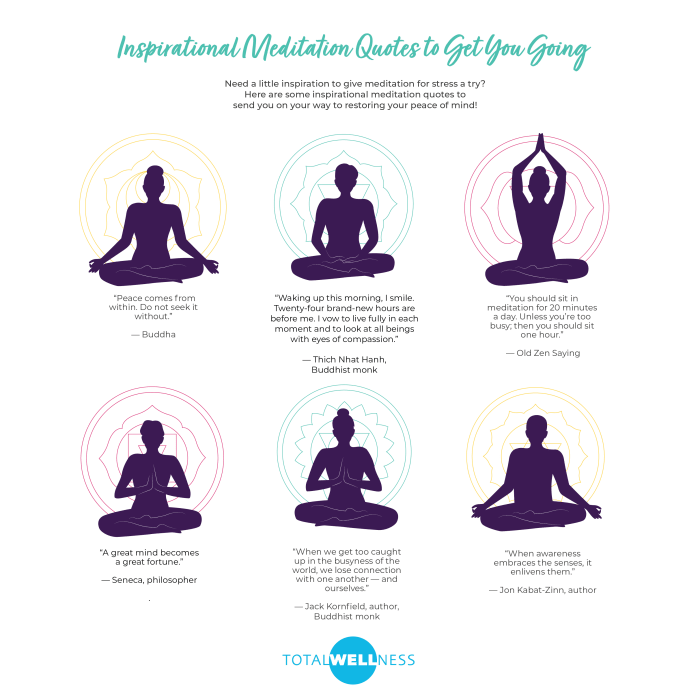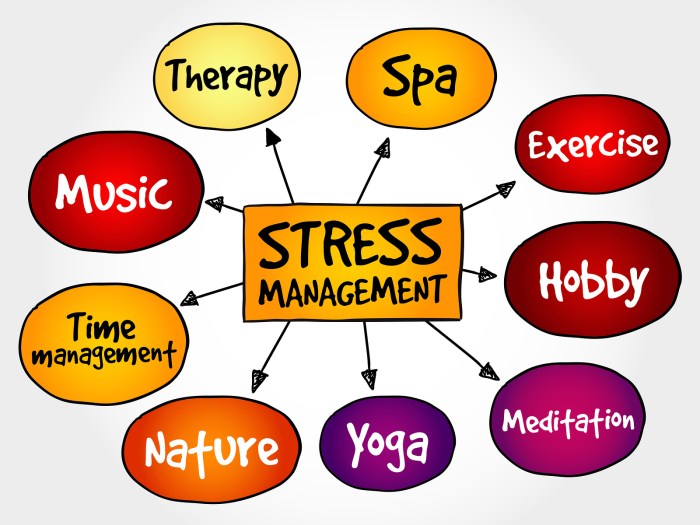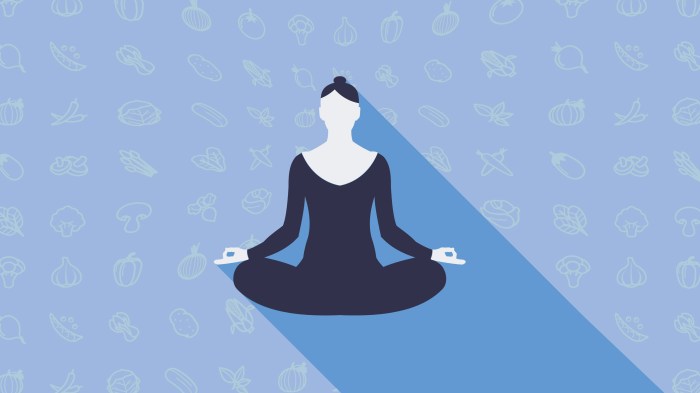Kicking off with 20-Day Meditation Plan for Stress Management, embark on a journey towards inner peace and stress relief. This comprehensive guide offers a structured approach to meditation, empowering you to manage stress effectively and cultivate a sense of calm in your daily life.
Explore the intricacies of designing a personalized 20-day meditation plan, discover various meditation techniques tailored for stress management, and learn how to track your progress and make necessary adjustments along the way.
Introduction to Meditation for Stress Management

Meditation plays a crucial role in managing stress levels by promoting relaxation, mindfulness, and mental clarity. Taking the time to practice meditation allows individuals to calm their minds, reduce anxiety, and improve overall well-being.
The Benefits of a 20-Day Meditation Plan
Embarking on a 20-day meditation plan can significantly impact stress levels by establishing a consistent routine that promotes inner peace and emotional stability. By dedicating time each day to meditation, individuals can learn to manage their thoughts and reactions more effectively, leading to a greater sense of control over stress triggers.
- Improves focus and concentration
- Enhances self-awareness and emotional regulation
- Promotes better sleep quality
- Reduces symptoms of anxiety and depression
Research has shown that regular meditation practice can lower levels of cortisol, the stress hormone, in the body, leading to a calmer and more balanced state of mind.
Designing a 20-Day Meditation Plan

To effectively manage stress through meditation, it is crucial to have a well-structured 20-day plan that incorporates various meditation techniques. This plan should focus on gradually building a meditation practice that suits your individual needs and lifestyle.
Day 1-5: Mindfulness Meditation
- Start with 5 minutes of mindfulness meditation each day, focusing on your breath and present moment awareness.
- Gradually increase the duration by 1-2 minutes each day to build consistency.
- Practice mindfulness during daily activities like eating or walking to integrate meditation into your routine.
Day 6-10: Body Scan Meditation
- Spend 10-15 minutes each day scanning your body from head to toe, noticing any tension or discomfort.
- Focus on releasing tension and relaxing each part of your body as you progress through the scan.
- Use body scan meditation to improve your awareness of physical sensations and promote relaxation.
Day 11-15: Loving-Kindness Meditation
- Practice sending love and compassion to yourself and others through loving-kindness meditation for 10-15 minutes daily.
- Focus on cultivating feelings of kindness, empathy, and goodwill towards yourself and those around you.
- Use loving-kindness meditation to foster positive emotions and strengthen your relationships with others.
Day 16-20: Guided Visualization
- Engage in guided visualization exercises for 15-20 minutes daily, imagining peaceful and calming scenes.
- Visualize yourself in a serene environment, focusing on details like sounds, smells, and sensations to enhance relaxation.
- Use guided visualization to reduce stress, anxiety, and promote a sense of inner peace and tranquility.
Daily Meditation Practices: 20-Day Meditation Plan For Stress Management

Incorporating daily meditation practices into your routine can significantly reduce stress and promote overall well-being. Creating a peaceful environment and focusing on different meditation exercises each day can help you stay grounded and centered throughout the 20-day plan.
Day 1: Mindful Breathing
- Find a quiet space and sit or lie down comfortably.
- Close your eyes and focus on your breath. Inhale deeply through your nose, hold for a moment, and exhale slowly through your mouth.
- Continue this mindful breathing exercise for 10 minutes, allowing yourself to let go of any tension or worries.
Day 5: Body Scan Meditation
- Lie down in a comfortable position and close your eyes.
- Starting from your toes, slowly scan your body, paying attention to any areas of tension or discomfort.
- Take deep breaths and release any tension you may be holding in each part of your body.
Day 10: Loving-Kindness Meditation, 20-Day Meditation Plan for Stress Management
- Sit comfortably and bring to mind someone you love unconditionally.
- Repeat phrases of loving-kindness such as “May you be happy, may you be healthy, may you be safe, may you live with ease.”
- Extend these wishes to yourself, then to others in your life, and finally to all beings.
Day 15: Visualization Meditation
- Close your eyes and imagine a place that brings you peace and joy.
- Visualize yourself in this serene environment, engaging all your senses.
- Stay in this visualization for 15 minutes, allowing yourself to experience a sense of calm and relaxation.
Day 20: Gratitude Meditation
- Sit comfortably and think about three things you are grateful for in your life.
- Reflect on the positive impact these things have on your well-being and express gratitude for them.
- End the meditation by setting intentions for the day ahead with a sense of gratitude and positivity.
Tracking Progress and Adjustments

Tracking your progress throughout the 20-day meditation plan is crucial for evaluating its effectiveness and making necessary adjustments. Here are some methods and guidance to help you stay on track:
Keeping a Meditation Journal
One effective way to track your progress is by keeping a meditation journal. Record the duration of each session, how you felt before and after meditating, any thoughts or emotions that arose, and any insights or realizations you had during the practice. This will help you identify patterns and monitor your growth over time.
Setting Goals and Milestones
Another method is to set specific goals and milestones for your meditation practice. Whether it’s increasing the duration of your sessions, improving focus and concentration, or reducing stress levels, having clear objectives will give you something to work towards and measure your progress against.
Soliciting Feedback
Don’t hesitate to seek feedback from others who may have experience with meditation or stress management. Whether it’s a meditation teacher, a friend, or an online community, external perspectives can provide valuable insights and help you make informed adjustments to your practice.
Reflecting and Adjusting
Regularly take time to reflect on your meditation practice and assess how it’s impacting your stress levels and overall well-being. If you find that certain techniques are not working for you or if you’re not seeing the desired results, be open to making adjustments. This could involve trying different meditation styles, changing the time of day you meditate, or seeking additional support.
Closing Notes

Embark on this 20-day meditation plan for stress management and witness the positive impact it can have on your overall well-being. By committing to this journey of self-care and mindfulness, you are taking a proactive step towards a healthier and more balanced life. Start your transformation today and embrace the power of meditation in alleviating stress and fostering inner peace.